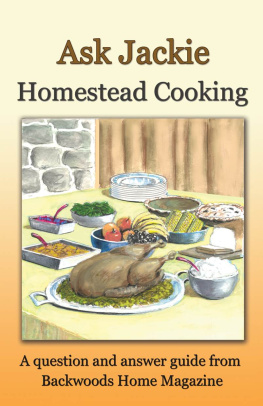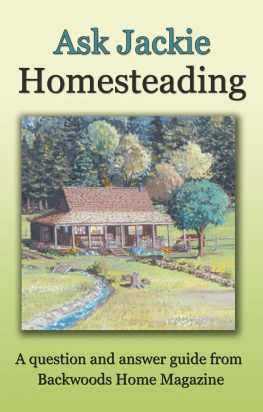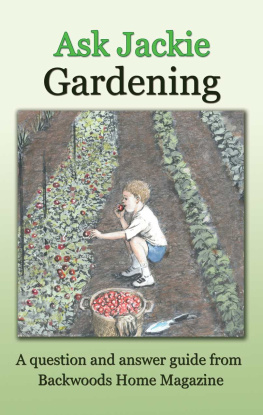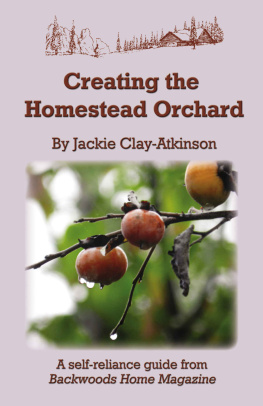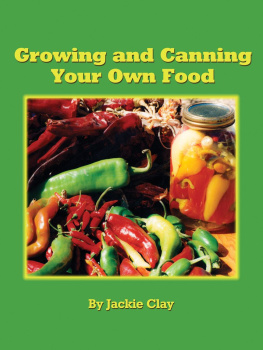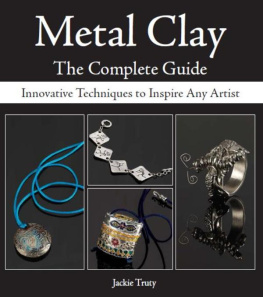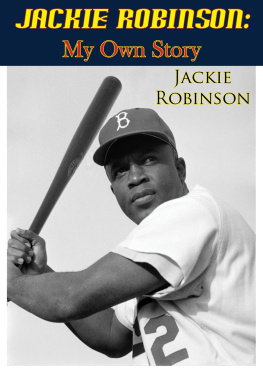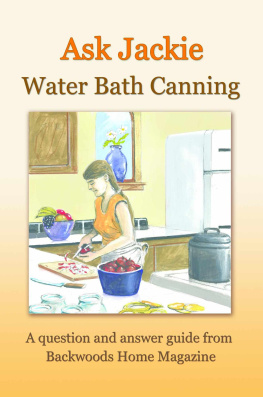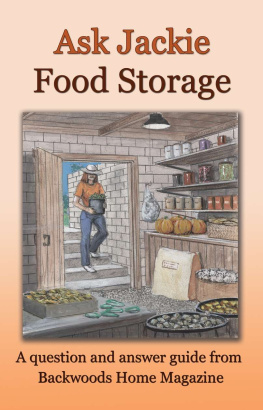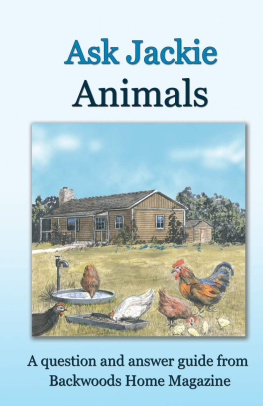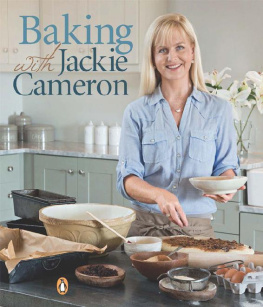Jackie Clay-Atkinson - Ask Jackie: Homestead Cooking
Here you can read online Jackie Clay-Atkinson - Ask Jackie: Homestead Cooking full text of the book (entire story) in english for free. Download pdf and epub, get meaning, cover and reviews about this ebook. year: 2012, publisher: Backwoods Home Magazine, genre: Home and family. Description of the work, (preface) as well as reviews are available. Best literature library LitArk.com created for fans of good reading and offers a wide selection of genres:
Romance novel
Science fiction
Adventure
Detective
Science
History
Home and family
Prose
Art
Politics
Computer
Non-fiction
Religion
Business
Children
Humor
Choose a favorite category and find really read worthwhile books. Enjoy immersion in the world of imagination, feel the emotions of the characters or learn something new for yourself, make an fascinating discovery.
- Book:Ask Jackie: Homestead Cooking
- Author:
- Publisher:Backwoods Home Magazine
- Genre:
- Year:2012
- Rating:5 / 5
- Favourites:Add to favourites
- Your mark:
- 100
- 1
- 2
- 3
- 4
- 5
Ask Jackie: Homestead Cooking: summary, description and annotation
We offer to read an annotation, description, summary or preface (depends on what the author of the book "Ask Jackie: Homestead Cooking" wrote himself). If you haven't found the necessary information about the book — write in the comments, we will try to find it.
Jackie Clay-Atkinson: author's other books
Who wrote Ask Jackie: Homestead Cooking? Find out the surname, the name of the author of the book and a list of all author's works by series.
Ask Jackie: Homestead Cooking — read online for free the complete book (whole text) full work
Below is the text of the book, divided by pages. System saving the place of the last page read, allows you to conveniently read the book "Ask Jackie: Homestead Cooking" online for free, without having to search again every time where you left off. Put a bookmark, and you can go to the page where you finished reading at any time.
Font size:
Interval:
Bookmark:
Table of Contents
Ask Jackie
Homestead Cooking
Copyright 1999-2012
ISBN: 978-0-9860152-4-3
Backwoods Home Magazine
PO Box 712
Gold Beach, Oregon 97444
www.backwoodshome.com

Edited by Jessie Denning, Julia Denning, Haley Kessel, Connie Sayler, Lisa Nourse, Rhoda Denning, and Ilene Duffy
Cover art by Don Childers
Illustrations by Don Childers, Jessie Denning, and John Dean
Introduction
On a self-reliant homestead, food is of prime consideration as most folks can grow and store much of their own precious supply of nutritious, chemical-free food to sustain life and make that life much more enjoyable. We grow about 90% of our own food and stock up on the rest such as sugar, rice, brown sugar, molasses, spices, etc. This is not survival food, consisting of a beans and rice base, but a huge variety of all sorts of food so that I can decide just what meal I want to cook at any time and have the ingredients right at hand to make that recipe. One day I might cook Mexican, another day Indian or Chinese or Arabic. Variety is truly the spice of life. Overkill on any one food is boring and is not a balanced diet.
To this end, I make many different types of cheese from our goat and cow milk, tend a small grain patch so we can grind wheat for flour, make a wide variety of breads from home-ground flours, grow a lot of different vegetables and fruits with new ones added each year, harvest nuts and wild fruits each year they are available, raise our own meat from chickens, pigs, and steers, and hunt wild meat. Its a great life; one we truly enjoy.
In this book, I answer a wide array of common (and a few uncommon!) questions on such subjects as homestead dairy products, meats, fruits, vegetables, grains, breads and other baked goods, nuts, and a whole lot more.
Enjoy the reading, and I hope I answer some of your own questions along the way!
Jackie Clay
Meat

Recipe for backstrap
Do you have a recipe to smoke venison backstrap?
Mari Ashworth, Washington
You can smoke venison backstrap the same way you do other meats. First, use a dry rub on the cleaned backstrap. You can use your own mixture. The USDA recommends the following: 1 lb. pickling salt, lb. brown sugar, and oz. saltpeter. You can also buy many different dry cure rubs at sports shops that stock wild game cooking supplies. You rub this mixture into the meat well. Place the meat in a clean, dry container, up on a rack so that the meat doesnt stand in the brine that is drawn from the meat. Keep the meat refrigerated during curing. Reapply rub in 6 days. It will take a backstrap about 27 days to fully absorb the cure. Then it is ready for smoking. You will want a sweet, cool smoke, using fruit wood, mesquite, alder, maple, etc. Never use pine or fir or your meat will taste like turpentine! The ideal smoking temperature is between 80 and 90F. You will probably smoke your backstrap about 48 hours. This can be all at once, or most conveniently, 12 hours smoking, then a rest, then another, etc., until finished. Curing and smoking meat is an art, and it does take practice to get it perfect. So be patient and keep practicing.
Pressure cooking beef bones
We have a subscription with you and greatly appreciate any information about pressure cookers. We have beef animals that we slaughter for the meat but have been throwing the bones away because they are too hard for the dogs to eat safely. The dogs dont seem to chew them good enough to digest properly. Once we had a scare with one of the dogs because of sharp bone fragments in his intestines. The dog recovered, but not without a huge vet bill! Do you guys (or our readers) know if we would cook large beef bones in a pressure cooker, if they would soften up? Also, weve read that bones provide the best source of calcium and glucosamine chrondroitin available. This could be an excellent source for all of us. Early man, and many Native Americans tribes would eat the meat and the bones. They were much more robust than us and they didnt depend on The Vitamin Shoppe or GNC! We are considering a pressure cooker by Wisconsin Aluminum Foundary called the All-American. Is this a good one or are there better ones (or easier to use)? Weve put off pressure cooking for years because of horror stories associated with them blowing up. What do you think? We would greatly appreciate any little tidbit of info that that you could offer. We highly value your magazine and are always eager for the next issue. Thank you,
Chuck & Marlene Stelnicki, Ohio
Usually dogs can eat the larger bones, a little at a time, as long as they are raw . When you cook bones, they splinter and are very hard for dogs to digest. I would suspect your dog was impacted with cooked beef bones. I know my ex-husband, a veterinarian, and I spent hours every year digging splintered steak bones out of the rear end of many suffering dogs. Not a pleasant task for anyone concerned!
Pressure canning/cooking does not soften beef bones.
Native peoples hammered the long bones of the legs of larger animals and ate the marrow from the bones, which also contains much nutrition and calcium, but not the bones themselves. We were not that tough!
You can cook beef bones and run them through a grinder, making bone meal, which should then also be baked to dry and sterilize the meal (this stinks like heck, so do it outside in an old stove). You can put this bone meal in your dogs food for added nutrition that will not harm them. Just be sure to make your bone meal all in one day so the bones do not spoil; you dont want harmful bacteria growing in your pets bones!
Yes, the All-American is a good canner. And Im so glad youve overcome your fears. Once you run a batch of home canned food through your canner, youll become confident and more sure of yourself, too. If home canning was in the least dangerous, I wouldnt have raised nine children helping me can in the kitchen. (No, you anti-population folks, they were not all homemade. Two were step-children, two were homemade, and the rest were special needs adoptions.)
Elk stew
In your Canning 101 article, you mention you make elk stew. My dad bow hunts and I always keep my eyes open for wild game recipes for him. Could you share it with me?
Donna Cashore
Sure, Donna, theres not many secrets on the Clay homestead. I make several variations of elk stew, but heres the one we use the most often. We usually use home canned meat, but you can use fresh meat, as well.
Elk stew with mushrooms:
2 lbs. lean cubed stew meat (or 1 quart if home canned)
lb. margarine
2 medium onions, coarsely chopped
1 lb. sliced mushrooms (or 1 pint if home canned)
1 quart beef stock or equivalent
6 medium carrots, scraped and cut (or 1 pint)
8 medium potatoes, peeled and cut (or 1 pint)
1 clove garlic
1 Tbsp. brown sugar
salt & pepper to taste
Melt the margarine in heavy Dutch oven and brown meat on all sides. Add mushrooms and onions, sauteing until barely browned. Add beef stock, vegetables, garlic, brown sugar, salt, and pepper. Simmer slowly until everything is very tender, adding water to keep juice covering stew.
When done, add flour to small bowl and enough water to make a smooth paste. Then add enough water to make the paste thin enough to pour. Pour into stew, while gently stirring. Heat enough to thicken the gravy and serve. We like it with fresh, fluffy homemade biscuits. Good eating.
Do you long for SOS? Heres how to make it
Next pageFont size:
Interval:
Bookmark:
Similar books «Ask Jackie: Homestead Cooking»
Look at similar books to Ask Jackie: Homestead Cooking. We have selected literature similar in name and meaning in the hope of providing readers with more options to find new, interesting, not yet read works.
Discussion, reviews of the book Ask Jackie: Homestead Cooking and just readers' own opinions. Leave your comments, write what you think about the work, its meaning or the main characters. Specify what exactly you liked and what you didn't like, and why you think so.

